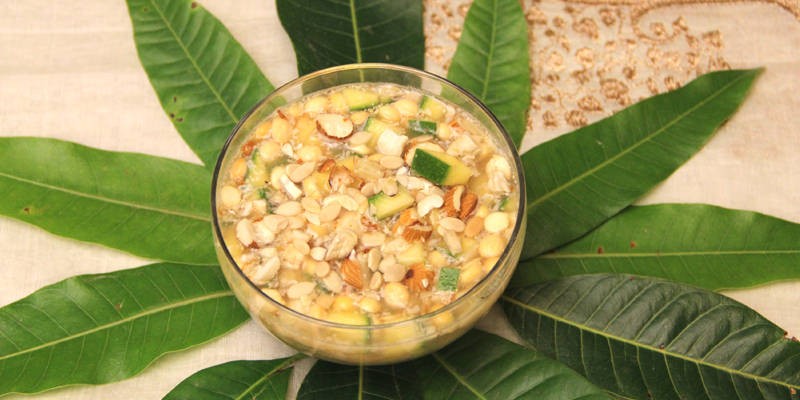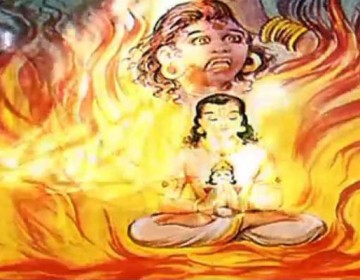ChandUgadi or Yugadi is the first day of Chandramana or shuklapaksh (bright fortnight) of Chaitra month of the Hindu calendar that coincides with March month of the Western calendar. During this period, while people in the Deccan Plateau—especially Karnataka, Telangana and Andhra Pradesh — celebrate Ugadi; Maharashtrians and Goans observe Gudi Padava and Sindhis celebrate Cheti Chand. Chaitra is considered a very auspicious month as per Hindu tradition. Ugadi originated from the Sanskrit word yuga (meaning age) and adi (beginning). Ugadi is the mark of a new year, or starting of new activities. Wearing new clothes, spraying vasantam (coloured water), eating chutney (sauce) consisting of six tastes, are important activities on the day. An Auspicious Beginning On Gudi Padava, a gudi (flag) is displayed in Marathi households. The gudi consists of green or yellow cloth tied to a long bamboo on which sugar, neem leaves, mango leaves, and a garland of red flowers are secured. It is placed towards the right side of the main entrance of the house. An inverted silver or copper pot is placed on it. The Sindhi community in India, and around the world, celebrates the second day of Chaitra month as Cheti Chand. It marks the beginning of the new year and also commemorates the birth of Ishtadeva Uderolal (Jhulelal), their patron-saint.
Traditional Practices
In Karnataka, families decorate their house-doors with mango leaves and flower garlands. Some go for Panchanga Shravanam—forecast reading by priests. Panchanga Shravanam is a programme of analyzing impact of each planet on Earth in general and crops, climate and people, in particular. Priests interpret planetary positions and declare how much rainfall a location would receive, health of the crops or harvest, possibility of any natural calamities, and so on. They predict events for each geographical region. At the end of that, they read out the year’s forecasts for each zodiac sign. Kalasa Puja (ceremonial prayer) is an important ritual of Ugadi. Kalasa is a copper pot decorated with turmeric, sandal paste and kumkum (vermilion). A thread dipped in turmeric is tied to it. Mango and mogra leaves are placed in thekalasa and a coconut is placed as a cork on the kalasa. Puja is performed to thiskalasa with scented or rose water, jasmine flowers and akshatas (uncooked rice mixed with turmeric powder).After the ceremony, a purnakumbha (earthen pot decorated like kalasa), is given along with clothes, money and flowers as dana (donation) to a priest and his blessings are sought.Sprinkling rose water loaded with many natural perfumes on family members, relatives and friends, is another popular ritual—known as Vasantasnanam. Panchanga Shravanam is a ritualistic foretelling of what the year holds for the country and to the individuals.After performing puja and eating Ugadipacchadi, people traditionally gather for Panchanga Shravanam in temples and other important places. In addition, the priests bless the congregation amid Vedicchanting.
Food – Puran Poli
Ingredients
1½ cups refined wheat flour
1¼ cups chana dal (Bengal gram) (split)
1½ cups jaggery (powdered)
1 cardamom (powdered)
A pinch of salt
A pinch of saffron
3 tbsp ghee (clarified butter)
Method
Boil the dal in a pan. Drain the water and grind it. Add jaggery, cardamom and saffron. Heat the mixture; stir continuously. Once it achieves consistency and dries, switch off the burner or flame. When the mixture cools down, split into parts and make sphere-shaped portions. Add a bit of refined wheat flour and salt. Add ghee and water to make soft dough. Cover with a damp cloth and keep aside for about an hour. Divide the dough and make sphere-shaped portions. Flatten each portion between your palms, stuff with a portion of puran, cover and seal the edges. Add a bit of refined wheat flour and roll into about ten centimetre – diameter rotis. Heat a shallow pan and heat the rotis; heat on both sides. It is ready to serve; add more ghee on top for those who relish it.












